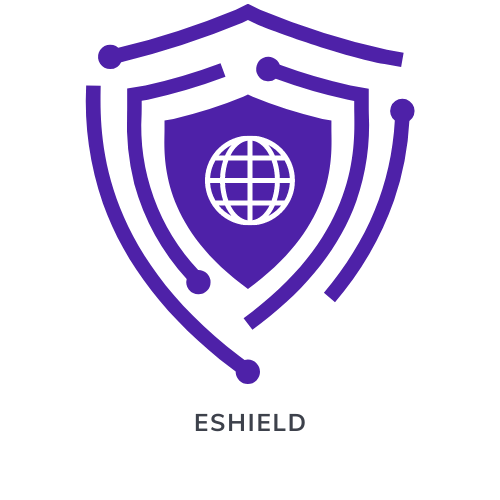Table of Contents
Pages
- About Us
- Vulnerability Assesment & Penetration Testing
- UAE Data Privacy
- KSA PDPL implementation and Fines
- Continuous Monitoring in Cybersecurity | Cyber Security Monitorring
- Empower Your Business with VCISO Services
- Soc Services
- Cyber Technology
- Security Assessments
- Audit and Compliance
- service
- India
- Cyber Security Framework SAMA
- Training & Skill Development
- Australia
- NESA Audit
- SOC2 Audit
- UAE
- Qatar
- Saudi Arabia
- Geographies
- Privacy Policy
- Penetration Testing
- Managed SOC Services
- Threat Hunting
- Dubai Computer Forensics
- Malware Analysis
- Cloud Security
- Incident Handling And Monitoring Services
- Red Team Assessments
- Mobile Application Audits
- Data Privacy
- ISO 27001
- Cyber Security Expert
- Vulnerability Assessment
- Application Security Auditing
- PCI DSS Compliance
- Privacy Policy-old
- Contact
- Blog
- Home
Categories
- What is Cyber Security?
- Web Application Security Auditing
- Web Application Security
- Web Application Firewall
- wapt
- Vulnerability Testing and Penetration Testing
- vulnerability assessment and penetration testing
- vapt
- Useful
- Uncategorized
- UAE Cyber Security Company
- top cyber security companies in the UAE
- Top 10 GRC Tools
- SOC UAE
- Security
- Red teaming
- Privacy
- Pentest
- PCI DSS Stands for
- PCI DSS Purpose
- PCI DSS Compliance
- PCI DSS
- News
- new tech
- Most Popular SIEM Tools
- Managed Security Services Provider
- ISO 27001 Consultants in UAE
- ISO 27001 Compliance in the UAE
- General
- cybersecurity regulation
- Cybersecurity
- cyber sercurity firm
- Cyber Security UAE
- Cyber Security Specialist
- Cyber Security Services
- Cyber Security Near Me
- cyber security master
- Cyber Security Jobs in Dubai
- Cyber Security GRC
- Cyber Security Expert
- cyber security course
- Cyber Security Consultant
- Cyber Security Company in Dubai
- Cyber Security Basic
- Cyber Security Awareness
- Cyber Security
- Compliance
- Application Penetration Testing

Unbreakable Cyber Security Services for 24/7 Digital Protection
Unbreakable Cyber Security Services for 24/7 Digital Protection
`In today's digital world, unbreakable cyber security is key to protect sensitive info and keep businesses running. Cyber threats are on the rise, and UAE organizations need strong digital protection

Cyber Security 101 | Learn the Basics to Safeguard Your Digital Life
Cyber Security 101 | Learn the Basics to Safeguard Your Digital Life
In today's digital world, keeping your online presence safe is key. With more digital threats around, knowing cyber security basics is a must. It helps protect your digital life from

Why Every Business Needs a Web Application Firewall in 2025
Why Every Business Needs a Web Application Firewall in 2025
In today's digital world, businesses face many cyber threats. As we head into 2025, strong cybersecurity is more important than ever. A WAF, or Web Application Firewall, is key. It

why pci dss is important ?
why pci dss is important ?
Protecting Payment Data and Building Customer Trust In the United Arab Emirates, keeping payment card transactions safe is key. The Payment Card Industry Data Security Standard (PCI DSS) is vital

Cyber Security Awareness 2025: Stay One Step Ahead of Hackers
Cyber Security Awareness 2025: Stay One Step Ahead of Hackers
As we near 2025, the world of cyber threats is changing fast. This change brings big risks for both people and businesses. Keeping your data safe has never been more
When it comes to safeguarding web applications from potential threats and vulnerabilities, mastering the art of application threat modeling is essential. Understanding the concept of threat modeling, utilizing tools like STRIDE, implementing best practices in application security, and exploring OWASP tools can significantly enhance the security posture of web applications. This article delves into the intricacies of application threat modeling and its importance in ensuring ultimate web application security.

Understanding the Concept of Threat Modeling
What is a threat model?
A threat model is a structured representation of all the potential security threats and vulnerabilities that could affect a system or application. It involves identifying and prioritizing security risks to develop effective security controls.
Why is threat modeling crucial for web applications?
Threat modeling is crucial for web applications as it provides a systematic approach to identify and address potential security threats. By analyzing the application’s design, architecture, and data flow diagrams, organizations can enhance their security posture and mitigate vulnerabilities.
How does threat modeling enhance application security?
Threat modeling enhances application security by enabling developers to proactively identify and address security threats during the software development lifecycle. It helps in implementing security controls and mitigating potential risks before they are exploited by malicious actors.

Utilizing STRIDE to Identify Potential Threats
What is the importance of STRIDE in threat modeling?
STRIDE is a mnemonic used in threat modeling to categorize different types of security threats: Spoofing, Tampering, Repudiation, Information Disclosure, Denial of Service, and Elevation of Privilege. By using STRIDE, organizations can systematically identify and analyze potential security threats.
How can STRIDE help in recognizing security threats?
STRIDE helps in recognizing security threats by providing a structured framework to evaluate the security implications of each threat type. It assists in prioritizing security concerns and implementing appropriate security measures to mitigate the identified risks.
What are the different aspects covered by STRIDE?
STRIDE covers various aspects of security threats, including identity spoofing, data tampering, information disclosure, denial of service attacks, and unauthorized privilege escalation. Understanding these aspects is crucial for developing effective security controls.

Implementing Best Practices in Application Security
What are the key best practices for securing web applications?
Key best practices for securing web applications include implementing secure coding practices, using encryption for sensitive data, regularly updating software components, conducting security testing, and enforcing access controls. These practices help in reducing vulnerabilities and strengthening application security.
How can security controls mitigate potential threats?
Security controls, such as firewalls, intrusion detection systems, access controls, and secure authentication mechanisms, play a vital role in mitigating potential threats. By implementing these controls based on the identified risks, organizations can effectively protect their web applications from security breaches.
Why is it essential to follow industry best practices in application security?
Following industry best practices in application security is essential to align with established security standards and guidelines. It ensures a proactive approach to addressing security threats and vulnerabilities, thereby enhancing the overall security posture of web applications.

Exploring OWASP Tools for Effective Threat Modeling
What role does OWASP play in web application security?
The Open Web Application Security Project (OWASP) is a non-profit organization dedicated to improving web application security. OWASP provides tools, resources, and knowledge for securing web applications and offers guidance on best practices for threat modeling and vulnerability management.
How can OWASP tools enhance the threat modeling process?
OWASP tools enhance the threat modeling process by offering specialized tools and frameworks tailored for identifying and addressing security threats in web applications. These tools streamline the threat modeling exercise and provide valuable insights into potential security risks.
What are the recommended OWASP tools for threat modeling?
Some of the recommended OWASP tools for threat modeling include OWASP ZAP (Zed Attack Proxy), OWASP Dependency-Check, OWASP Code Pulse, and OWASP WebGoat. These tools assist in identifying vulnerabilities, performing attack simulations, and strengthening the security posture of web applications.

Conducting Threat Modeling Exercises for Enhanced Security
What is the process involved in performing a threat modeling exercise?
The process of performing a threat modeling exercise involves identifying assets, creating a data flow diagram, analyzing potential threats and vulnerabilities, assessing security risks, and implementing security controls. It requires collaboration between developers, security experts, and stakeholders to ensure comprehensive threat assessment.
How can threat modeling techniques help in identifying vulnerabilities?
Threat modeling techniques help in identifying vulnerabilities by systematically analyzing the application’s attack surface, threat actors, and potential attack vectors. By conducting threat modeling exercises, organizations can uncover hidden security risks and take proactive measures to mitigate vulnerabilities.
What are the common types of threats encountered in web applications?
Common types of threats encountered in web applications include SQL injection, cross-site scripting (XSS), security misconfigurations, inadequate authentication mechanisms, and sensitive data exposure. By addressing these threats through effective threat modeling, organizations can enhance the security of their web applications.











